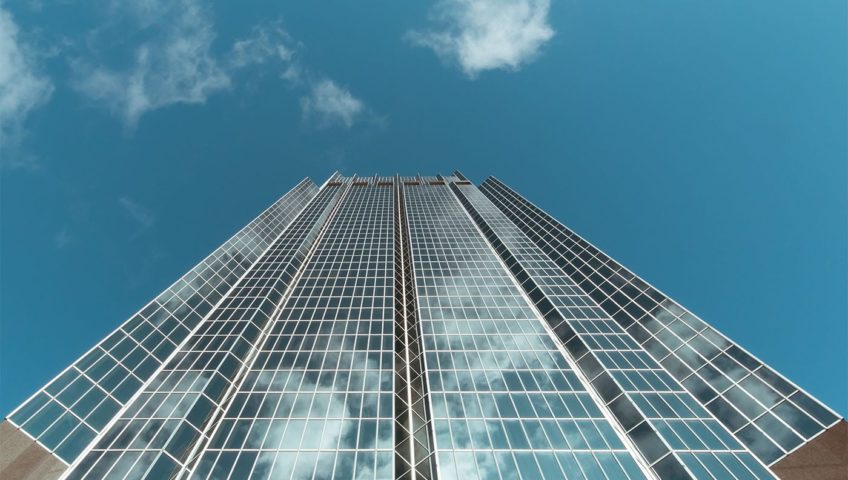Curtain wall system consists of one of the high-rise building facade technology components. In the facades, the window wall, cladding material and the landscape wall, which makes the building’s outer envelope. The Curtain wall system now possesses the same structural importance that is acquired by the building’s other structured components. As a higher exposure to the external atmosphere, it should be properly designed, installed and maintained keeping in mind the effectiveness and durability.
Functions of Curtain Walls in Buildings
Elimination of Water Penetration
Water penetration is a face-to-face basic function. Here is a complete impermeable sealing screen panel system that is not possible to bring. So the resistance is kept in two stages. The primary level where the water is completely protected and if it fails at a secondary level where the water is directed to drain the water below.
Air impermeability
This function is an environmental concern to reduce carbon dioxide emissions due to a reduced rate or profits in external and internal environments.
Resistance to the wind, thermal and acoustic action
Wind works are transferred by building floor cladding system which acts as linear support. The large-scale cloud computing system is usually one-way spread. So each floor layer supports one layer of air load on a building. Strictly necessary for a mask for the reduction of heat consumption and CO2 emissions. The insulation materials are provided in both the obsolete as well as transparent areas.
Acoustic insulation is very essentially necessary in the environment inside and outside the city-centric building. Massive structural components possess high acoustic insulation like sheets or concrete structures.
Solar levels
One of the glass surfaces provides an electoral cover that can be reduced to solar control. This coat is called selector because the solar radiation of different wavelengths allows passing electively: the visible wavelength of the light permits to flow freely from infrared wavelengths. For example, due to ultraviolet radiation, the exhibition may reduce or decrease the space for the screen. For this, you can apply a UV-inhibiting film to the glass page.
Types of Curtain Wall System
Curtain wall systems are prefabricated factory systems. They are bought in the place and mounted. These are two types based on how each component is assembled.
1- Stick Curtain Wall System
In it, its components will be merged with the pieces of the building on the site. This is mainly installed in low growth buildings or small areas. Because external access to reach higher heights is essential. These additional requirements such as scaffolding, crane etc. will be required. Onsite adjustment is possible as the above system costs lower the cost of shipping costs. But time and labor costs are recorded to be high.
2- Unitized curtain wall systems
It involves integrating it through factory-bought interlocking units. The whole material is bought together as a unit from the factory. Each material is not required as a personal installation sticky Curtain wall system. Screen wall size is dependent on the floor. Therefore it is essential to remember the transportation and installation mode when planning to look deeper.
This system is mainly used in high-rise buildings. This does not require external support like cranes or scaffolding. Only the mini crane or a temporary lift can be kept on the floor to help during installation. Due to the production of the factory, this system will be able to quickly build and get high-quality facilities. But due to the greater protection needs of the transport, high shipping charges are referred to as profit.
Components of a Curtain Wall
The entire unit consists of the following structural components
- Transom
- Mullions
- Vision Glass
- Anchor
The horizontal member of transmuted or horizontal railway screen wall panel. Mullions or vertical rails are anchored to the edge slab or beam. This is mainly supported in the support of the dead weight of the screen wall. The conventional or sticky screen wall system has to be placed one after each system. High-quality check and accuracy required for installation. But on the Units system, factory products are attached as two units which must be connected.
Panel Framing details of Curtain Walls
In the case of sticky Curtain wall details, does not split a single unit into a single unit. During longer periods, intermediate transmissions will be needed, which basically divides the whole vertical panel into two parts. To prevent condensation, the temperature of millions and transmute is broken. This prevents cold bridging.
Weather Tightness of Curtain Walls
Weather intensity mainly deals with the problem of water permeability. This is employed to avoid impermeable insulating units (glazed units). In addition, a gazette is provided which leads to a discount. Any water that comes in the gasket leads to exchange, resulting in the loss of transmuting joints or millions.
Support Conditions of Curtain Walls
As discussed the Curtain wall system is fitting from the top level supported to different levels. Support is held on most edge beams. So to avoid big hurdles, it is essential for a very tough edge beam. This vertical obstruction can disturb the whole screen system. So the precision of the bee beetles covers the cover wall and cladding system especially when it will be highly glazed.
An alternative steel strong backs can be supplied so that they can extend into perimeter columns and therefore it is not necessary to connect to the side beam or floor slab. The powerful backing is mainly in the rolled sections.
Structural Behavior of Curtain Walls
In past studies, it has been shown that side Curtain wall appears to be mainly resistant to neighboring forces, but measuring the number of losers is measurable. Although the damage can be repaired, there is an economic loss and delay in business activity. Curtain wall details are considered as a structural element of the building. It acts as a division between the external and internal environments of the building, has a transmitted load role for structural stability.


Write a Comment